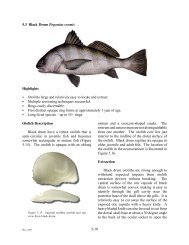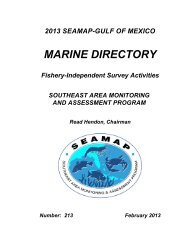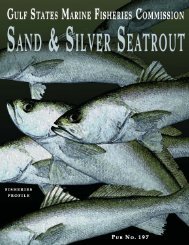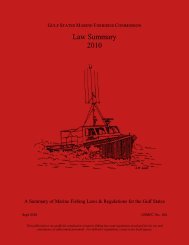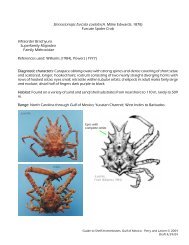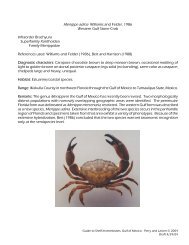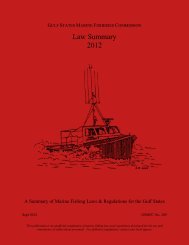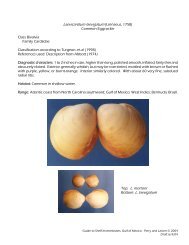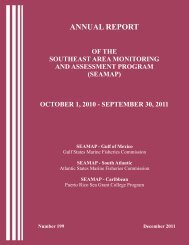Guidelines for Marine Artificial Reef Materials, Second Edition
Guidelines for Marine Artificial Reef Materials, Second Edition
Guidelines for Marine Artificial Reef Materials, Second Edition
Create successful ePaper yourself
Turn your PDF publications into a flip-book with our unique Google optimized e-Paper software.
esearch, and experimentation with various materials, including designed structures (Bohnsack<br />
1987).<br />
Experimentation and small-scale deployment of specifically designed artificial reef structures began<br />
in the United States in the late 1970s, and continues to the present. While secondary use materials<br />
are still used in the majority of artificial reef construction projects, several coastal states have, in<br />
recent years, begun utilizing designed reef structures to carry out artificial reef development<br />
objectives. This expanded reliance upon designed reef materials is due, in part, to the development<br />
of more readily available, af<strong>for</strong>dable, and seemingly dependable designs, recent increases in funding<br />
levels of some artificial reef programs, and the loss of previously relied-upon supplies of certain<br />
secondary use materials. Whether using designed materials or secondary use materials, it is likely<br />
that artificial reef development will continue at a pace that early activists would not have predicted,<br />
a situation that clearly requires examination and oversight.<br />
1.4 National <strong>Artificial</strong> <strong>Reef</strong> Plan<br />
The National Fishing Enhancement Act (Act) was passed by Congress and signed into law in 1984,<br />
and brought attention to artificial reefs in a broader context of planning and responsibility than had<br />
previously been embraced. The Act called <strong>for</strong>, among other things, the development of a long term<br />
National <strong>Artificial</strong> <strong>Reef</strong> Plan (National Plan, Stone 1985). The National <strong>Marine</strong> Fisheries Service<br />
(NMFS) was given the lead in the development of the National Plan, which was completed and<br />
adopted in 1985. One of the most important sections of the National Plan discusses general criteria<br />
<strong>for</strong> materials that are to be used in the development of artificial reefs, including function,<br />
compatibility, durability and stability, and availability.<br />
Each of the four criteria described below is vital when considering the use of any material <strong>for</strong><br />
artificial reef application. Selecting a material because it meets one or two of the criteria will most<br />
likely result in a less-than-successful ef<strong>for</strong>t. <strong>Materials</strong> should be selected because they help achieve<br />
the primary goal <strong>for</strong> a reef project, generally creating habitat <strong>for</strong> marine fish and invertebrate<br />
organisms. Taking the below criteria into consideration, cost and availability of materials are also<br />
important factors in determining what materials to use. <strong>Materials</strong> that are available but are not costeffective<br />
are of limited value to a program. <strong>Materials</strong> that are inexpensive but scarce make artificial<br />
reef development difficult. The right combination of availability and af<strong>for</strong>dability is critical <strong>for</strong><br />
cost-effective artificial reef development and management.<br />
1.4.1 Function<br />
This criterion is related to how well a specific material functions in attracting and holding aquatic<br />
organisms. It is important that a material provide habitat <strong>for</strong> small organisms, attaching epifauna,<br />
and larger species that are important to recreational and commercial fisheries. If it is known that<br />
specific materials do not provide suitable habitat <strong>for</strong> the establishment of marine communities, or<br />
do not support the goal <strong>for</strong> which an artificial reef is being developed, the function of that material<br />
should be evaluated and alternatives considered.<br />
-3-




